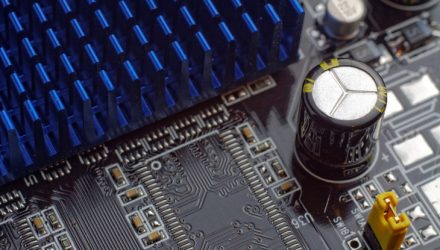While PowerShares DWA Technology Momentum Portfolio (PTF) is also rebalanced on quarterly basis, it aims to identify tech companies that are showing relative strength and is reconstituted every three months. Here as well, semiconductor and semiconductor equipment companies were more exposed (28% of assets) than technology hardware, storage & peripherals (12%), but stocks are not equal in positioning. Advanced Micro Devices (AMD) and Micron Technology (MU) were among the top-10 holdings with recent weightings of 4.3% and 2.6%, respectively; AAPL was the largest holding at 5.0% of assets. PTF, which tracks a Dorsey Wright index, has a 0.60% net expense ratio and has $130 million in assets.
In contrast, and using an index designed by DFA, John Hancock Multifactor Technology ETF (JHMT) combines size, value and quality attributes to build its portfolio. Semiconductor & semiconductor equipment companies (24% of assets) are again higher than technology hardware, storage & peripherals (12%), with Intel (INTC), Qualcomm (QCOM) and MU among top-10 holdings. However, MSFT and AAPL were the two largest holdings. JHML, which is rebalanced on semi-annual basis, has a 0.50% net expense ratio and $40 million in assets.
Of course, investors that want to focus solely on the semiconductor and semiconductor equipment industry could look to industry specific products, including iShares PHLX Semiconductor (SOXX) or SPDR S&P Semiconductor (XSD), but they would miss out on the diversification benefits in case analysts are incorrect about the industry leading the sector’s earnings this season.
